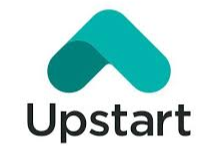*Palantir – $19.61 Post Earning pop of 18%!*
*One can start nibbling at around $19.60 BUT spread out purchases on declines, there should be declines after this post earnings bump and since this is a long term story I still anticipate 15-16% of annual gains over the next 5 years.*
The Reasons for the post earnings pop.
I think the trend of rewarding profitability as in the case of Meta last week seems to be working for Palantir as well.
Investors are seeing that Palantir is serious about cost control and better margins. With revenue growth in the low 20’s overall, with the main catalyst being commercial customers, Palantir is doing the right thing by focusing on profitability.
Consider these metrics for Q4, which indicate a lot of progress since the days when Palantir didn’t care about profitability….I guess the drop to $6.35 at its low changed their perspective quite a bit
Fourth consecutive quarter of GAAP operating profitability. 11% Margin.
Adjusted free cash flow of $305 million; 50% margin; 731Mn for the year.
Adjusted operating margin of 34%; 28% for the year.
Fifth consecutive quarter of expanding adjusted operating margins
Fifth consecutive quarter of GAAP profitability; 15% margin
Commercial customer count grew at a very impressive rate of 55% – higher than the revenue of 32%, this is mostly normal for Palantir, they usually land and expand.
While the revenue guidance is just 1-2% higher than the previous estimate, there is guidance for GAAP profits in each quarter, 40% commercial business growth and adjusted profit margins of 32+% and cash flow of 33% – that is very good.
The AIP (Artificial Intelligence Platform) seems to be getting a lot of attention.
I also suspect multiples and targets will also move up considerably, growth can accelerate from here.









